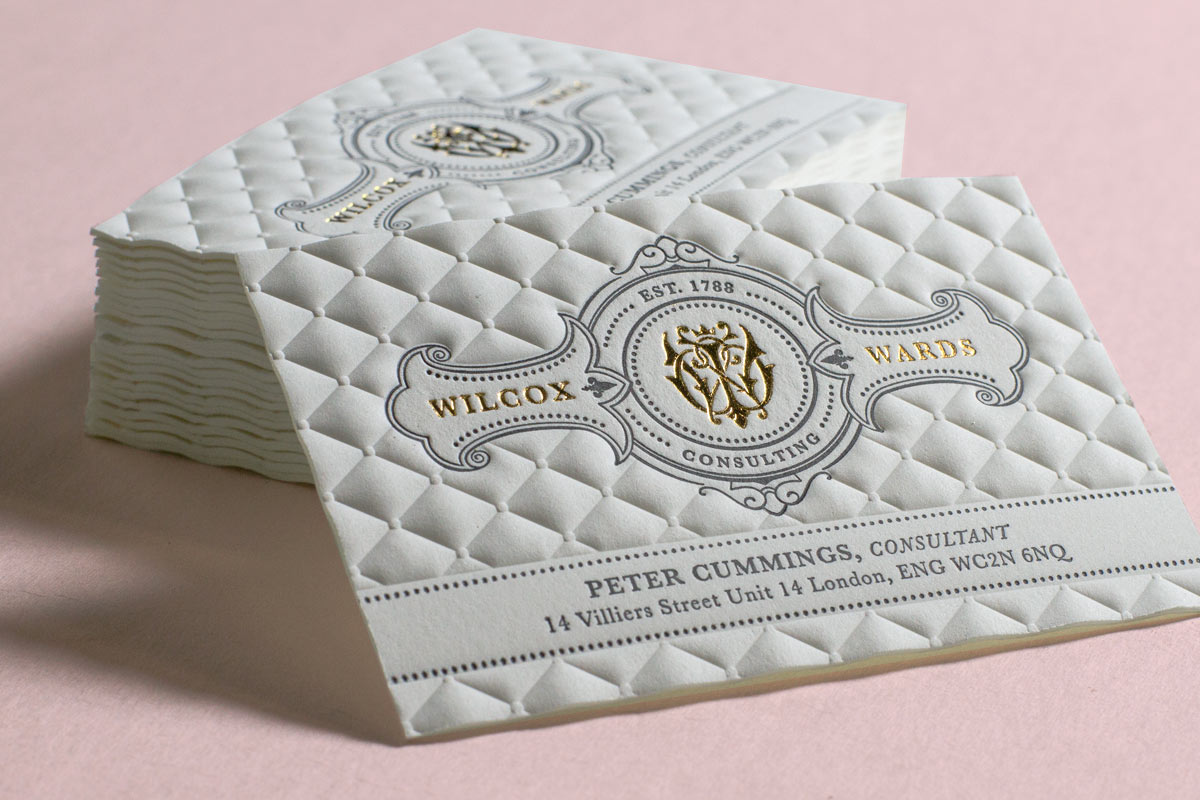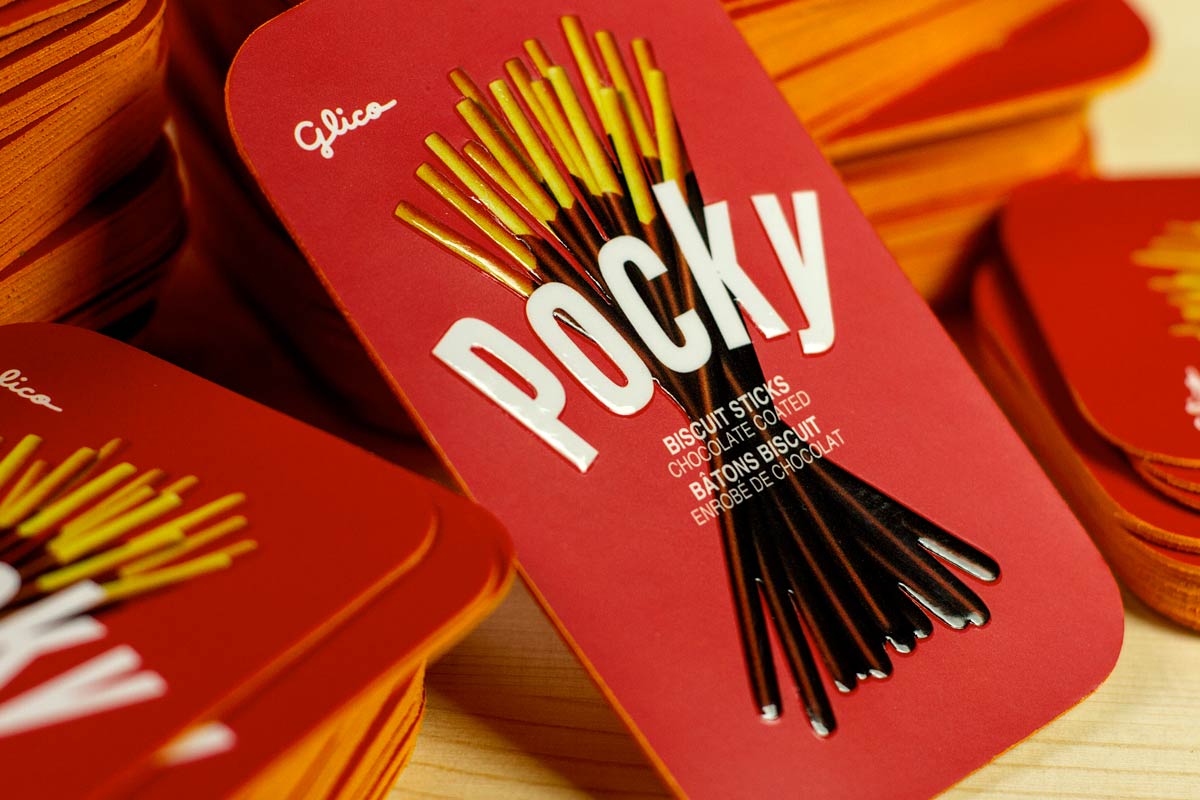When it comes to adding an unmatched level of elegance to your business cards, few options shine like embossing and debossing. If you’ve been searching for a way to add that extra touch of slick luxury to your brand, this is the way to go. While these two techniques share a bit in common (and are easy to confuse with one another), there are a few differences you'll want to familiarize yourself with. We’re going to make the decision making process easier by cluing you in on the finer points of both. Knowing the difference between the two will help you choose which one to use for your upcoming print project.
Embossing Vs. Debossing
Let’s start by breaking down what these terms mean. Embossing is a technique you may have seen before on items like wine labels and greeting cards, even if you weren't sure what the effect was called. Whenever you take a piece of paper (or metal, card stock, etc.) and raise it to make a relief graphic, you’re creating an embossed element.
Blind Embossing on 17pt Uncoated
How's it done? The process requires the creation of a metal plate, called a die, with the raised graphic you want embossed. The plate is then pressed into the material from underneath. The pressure raises the paper and creates the embossed design that is etched on the die. Embossing dies are made of sturdy metal that can be reused many times.
Embossing is different from raised ink printing (or thermography), another technique you might have heard of or seen. Raised ink printing is achieved using a powder that binds together when heated, rather than changing the shape of the paper itself. Although these processes may seem similar, embossing creates a crisper, higher caliber output. While embossing will have a higher setup fee, you will see the payoff in the quality of the final result.
Debossing works similarly, but instead of pressing the die from underneath, it is applied from the top. Text and graphics are pressed into the material instead of raised, creating an indentation. You can think of it as the opposite of embossing, but the reasons you would use for both are virtually identical. Both embossing and debossing are effective techniques when you want to highlight a particular part of your business card, like a logo or key information. Embossing and debossing will add extra visual appeal and convey an added air of professionalism that can boost the perceived value of your brand. To add extra layers of dimension, you can even do both embossing and debossing on the same card, although some designs will work better than others with this option.
Debossing on 40pt Cream Cotton
3D Embossing
If you want to take your cards to even higher heights, you might consider 3D Embossing. This specialty embossing process uses gradations, or varying levels of indentation, to create a “sculpted” image that really pops off the page. 3D Embossing opens up new possibilities to create an outstanding card that will be sure to draw attention to your brand. This is perfect for the creative type that wants to push boundaries and make an impression.
3D Embossing on 40pt White Cotton

Additional Considerations
Now that you've got a grasp on the basics of embossing and debossing, it's time to get into some of the finer points. The first thing we should stress is that while it's possible to do either embossing or debossing on just about any type of paper, the effect is most prominent on soft paper stocks, like cotton. Harder paper stocks have denser fibers that are harder to manipulate. A thicker paper stock, like the 40pt Cotton, will really emphasize the raised effect.
Secondly, there are a few small differences between embossing and debossing you'll want to be aware of. Embossing and debossing will leave a mirrored indentation on the opposite side of the paper. You’ll have to take it into consideration when creating your design as the impression will interfere with any printed content on the other side.
Different Ways of Using Embossing
There are a couple different ways of incorporating embossing and debossing into your design. Considering your approach carefully will help you create a design that stands out from the crowd.
The first option is to create a blind emboss or deboss. This is when the embossed design is printed without any other printing methods. Simply, an impression of your design is made on the paper. This method creates a subtler effect that lets the embossing or debossing stand on its own. Adding an extra textural detail will invite people to examine your cards with extra attention. This is sure to leave a lasting impression when you hand out your business cards.
Registered Embossing with Gold Foil
When embossing or debossing is applied to a design that has been printed with another printing method, this is called registered embossing or debossing. With this option, the design is printed first and then embossed or debossed afterwards. Registered embossing or debossing can be used in conjunction with a variety of other printing processes, from digital and offset to foiling and spot gloss. If you need to punch up a particular element of your design, registered embossing is great way to do it.
Registered Embossing with Spot Gloss
As we touched on earlier, embossing and debossing can leave a mirrored impression on the reverse side of a card. The best way to address this is to choose a 2-ply (duplex) card, which will mask the impression on the other side. The mounting process used to create the 2-ply will impact how noticeable the embossing or debossing will appear. If you decide to take this route, bigger and bolder elements are always better, as smaller details might get lost. A blind emboss or deboss will also help the design stand out more.
Conclusion
While embossing is, generally speaking, a bit more popular than debossing, both will help your next print project stand out and give it an air class and sophistication. Be sure to consider your options, check out some of our print inspirations and sample packs, and drop us a line when you're ready to get started on your next print job!










